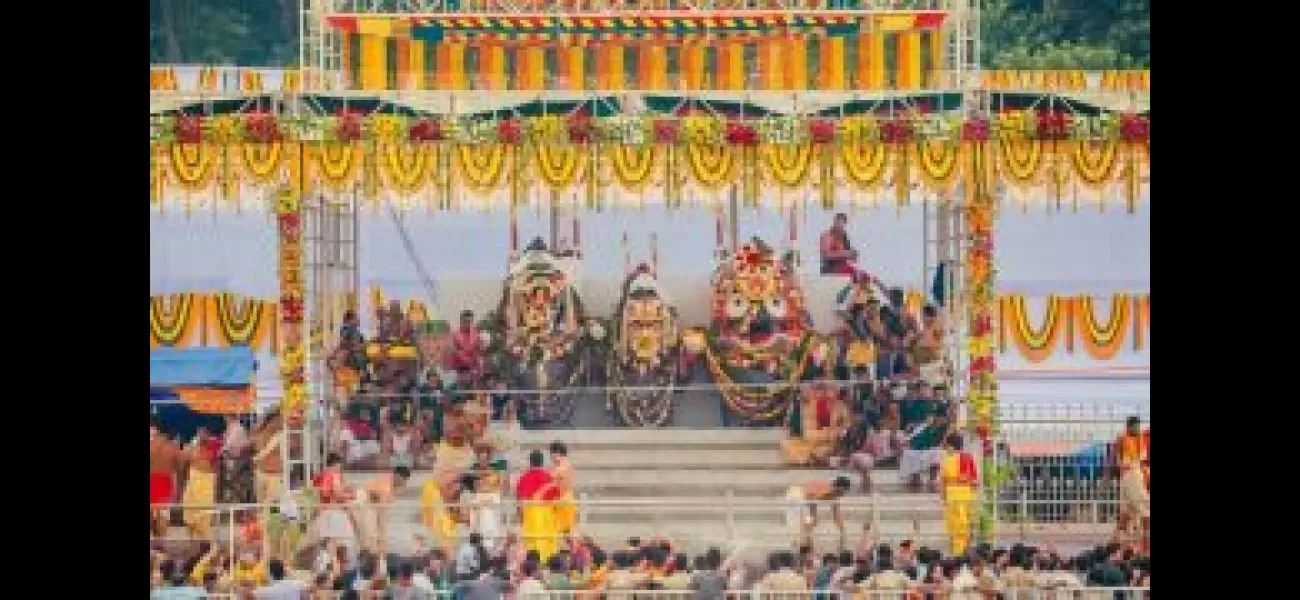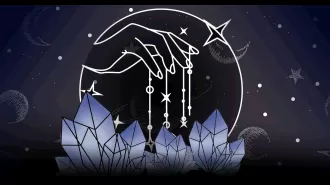Many people watched the 'Snana Yatra' of Lord Jagannath in Puri.
Thousands gather in Puri, Odisha for Lord Jagannath's Snana Yatra bathing ritual at the 12th-century temple with the sibling deities.
June 22nd 2024.

On a sunny Saturday in the seaside town of Puri, thousands of devoted followers gathered to witness the sacred bathing ritual of Lord Jagannath at the ancient 12th-century temple. The beloved sibling deities, Lord Balabhadra, Devi Subhadra, and Lord Jagannath, were slowly brought to the bathing altar, known as the "Snana Mandap", on the temple grounds. It was a momentous occasion as 108 pitchers of holy water were poured over the deities, cleansing them and preparing them for the upcoming Rath Yatra festival.
With great care and reverence, 35 pitchers of water were poured over Lord Jagannath, while Lord Balabhadra and Devi Subhadra received 33 and 22 pitchers respectively. The remaining 18 pitchers were reserved for Chakraraj Sudarshan, the divine wheel of Lord Jagannath. The water used for the ritual was collected from the "Suna Kua" or golden well within the temple premises. It was then mixed with herbs and aromatic essences before being poured on the deities at the "Snana Bedi". This sacred act marked the beginning of the annual Rath Yatra festival, a time of great celebration and devotion for the people of Puri.
Following the bathing ritual, Gajapati Maharaja, the titular king of Puri, performed the "Chhera Panhara" ritual at the "Snana Mandap". This ritual, carried out by Pandit Surya Narayan Rathsharma, a renowned researcher of Jagannath culture, symbolizes the king's humble service to the deities. After this, the deities were adorned in their majestic "Hati Besa" attire at the "Snana Bedi". This intricate and beautiful elephant-inspired costume is traditionally made by skilled artisans at the Raghaba Das Mutt and Gopal Tirtha Mutt.
According to belief, the deities become ill from the excessive bathing and are then taken to the "Anasara Gruha" or the sick room. Here, they will be quarantined for 14 days, during which time devotees are not allowed to visit them. It is only after their recovery that the deities will reappear for the "Nabajauban Darshan", when devotees can once again seek their blessings.
To ensure a smooth "darshan" or glimpse of the deities, around 68 platoons of policemen were deployed and elaborate arrangements were made. Despite the restrictions, most devotees were able to catch a glimpse of the deities from the "Bada Danda" or the grand road in front of the temple. It was a day filled with devotion, tradition, and celebration as the town of Puri came together to honor and worship their beloved deities during the auspicious "Snana Yatra".
With great care and reverence, 35 pitchers of water were poured over Lord Jagannath, while Lord Balabhadra and Devi Subhadra received 33 and 22 pitchers respectively. The remaining 18 pitchers were reserved for Chakraraj Sudarshan, the divine wheel of Lord Jagannath. The water used for the ritual was collected from the "Suna Kua" or golden well within the temple premises. It was then mixed with herbs and aromatic essences before being poured on the deities at the "Snana Bedi". This sacred act marked the beginning of the annual Rath Yatra festival, a time of great celebration and devotion for the people of Puri.
Following the bathing ritual, Gajapati Maharaja, the titular king of Puri, performed the "Chhera Panhara" ritual at the "Snana Mandap". This ritual, carried out by Pandit Surya Narayan Rathsharma, a renowned researcher of Jagannath culture, symbolizes the king's humble service to the deities. After this, the deities were adorned in their majestic "Hati Besa" attire at the "Snana Bedi". This intricate and beautiful elephant-inspired costume is traditionally made by skilled artisans at the Raghaba Das Mutt and Gopal Tirtha Mutt.
According to belief, the deities become ill from the excessive bathing and are then taken to the "Anasara Gruha" or the sick room. Here, they will be quarantined for 14 days, during which time devotees are not allowed to visit them. It is only after their recovery that the deities will reappear for the "Nabajauban Darshan", when devotees can once again seek their blessings.
To ensure a smooth "darshan" or glimpse of the deities, around 68 platoons of policemen were deployed and elaborate arrangements were made. Despite the restrictions, most devotees were able to catch a glimpse of the deities from the "Bada Danda" or the grand road in front of the temple. It was a day filled with devotion, tradition, and celebration as the town of Puri came together to honor and worship their beloved deities during the auspicious "Snana Yatra".
[This article has been trending online recently and has been generated with AI. Your feed is customized.]
[Generative AI is experimental.]
0
0
Submit Comment





